History, Art & Culture: August 2025 Current Affairs | General Test Preparation for CUET UG - CUET Commerce PDF Download
GS1/History & Culture
Lalit Kala Akademi and the 64th National Exhibition of Art
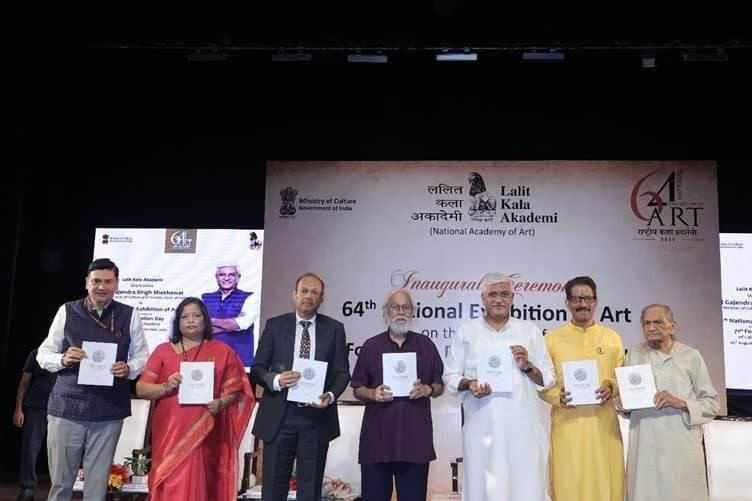 Why in News?
Why in News?
The 64th National Exhibition of Art (NEA), organized by the Lalit Kala Akademi, India’s National Academy of Art, was inaugurated in New Delhi. This exhibition is a significant event in the field of Indian art, showcasing a variety of artistic expressions and promoting cultural heritage.
Key Takeaways
- The 64th NEA is being held from 5 August to 15 September at Kamani Auditorium and Lalit Kala Art Galleries, New Delhi.
- Lalit Kala Akademi was established on 5 August 1954 and is recognized as an autonomous organization.
Additional Details
- Establishment: Lalit Kala Akademi was inaugurated by Maulana Abul Kalam Azad, the then Minister for Education.
- Legal Status: The Akademi received statutory status in 1957 under the Societies Registration Act of 1860.
- Funding: It is funded by the Ministry of Culture, Government of India.
- Structure: Operates through a General Council, Executive Board, and various Committees with regional centres in Chennai, Kolkata, Lucknow, Bhubaneswar, and Garhi (New Delhi).
- Functions: The Akademi promotes modern, contemporary, folk, and tribal visual arts of India and maintains a permanent art collection.
- International Role: Facilitates cultural exchange through international agreements.
- Key Events: Annual flagship event showcasing artists since 1955, and notable exhibitions like Triennale India and Print Biennale India.
The NEA serves as a platform for both emerging and established artists, reinforcing India's cultural diplomacy and enhancing its soft power on a global scale.
GS1/History & Culture
A Conservation Manual, Drafted by the Ordinary Citizen
Why in News?
This discussion revolves around Prime Minister Narendra Modi's Independence Day speeches, which often urge citizens to honor the sacrifices of freedom fighters. However, these reminders tend to be symbolic and do not provide substantial means for engaging with India's complex historical landscape.
Key Takeaways
- Conservation practices in India are deeply rooted in colonial history.
- Current approaches, such as those of the Archaeological Survey of India (ASI), often lack depth and fail to engage local communities.
- Gandhi's philosophy and modern ecological insights can inform a richer conservation strategy.
- Citizen involvement is crucial for redefining heritage conservation in India.
Additional Details
- Colonial Legacies: The British legacy in conservation was driven by administrative control rather than cultural respect. This is evident in John Marshall's 1923 Conservation Manual, which still influences ASI today.
- Community Engagement: Conservation should aim to improve the lives of local communities rather than merely preserving structures. Monuments can serve as spaces for cultural exchange and community resilience.
- Translation Metaphor: Just as translators acknowledge the evolution of meaning, conservationists must recognize the need for transparency and adaptability in their practices.
- Ecological Insights: Conservation can benefit from interdisciplinary approaches, including insights from wildlife biology and economics, to view monuments as part of broader ecosystems.
In conclusion, India faces the challenge of moving beyond colonial-era conservation practices towards a more inclusive and dynamic vision. By integrating diverse perspectives and fostering citizen participation, heritage can become a living dialogue that enriches both culture and community.
GS1/History & Culture
Archaeological Survey of India (ASI)
Why in News?
The Archaeological Survey of India (ASI) is currently under public scrutiny due to the controversial transfer of archaeologist K. Amarnath Ramakrishna, raising questions about the organization's integrity and operations.
Key Takeaways
- The ASI is a key organization under the Ministry of Culture, Government of India.
- Established in 1861 by Sir Alexander Cunningham, ASI is headquartered in New Delhi.
- It became a statutory body under the Ancient Monuments and Archaeological Sites and Remains Act, 1958 (AMASR Act).
- ASI manages the protection and maintenance of 3679 monuments and sites of national importance.
Additional Details
- Established Body: The ASI was founded in 1861 to oversee archaeological research and protect India's cultural heritage.
- Key Legislation: The organization operates under the AMASR Act and the Antiquities and Art Treasure Act, 1972, regulating archaeological activities across the country.
- Workforce: ASI employs a diverse team of trained professionals including archaeologists, conservators, and scientists to conduct research and preservation efforts.
- Operational Branches: The ASI has several branches, such as Excavation, Epigraphy, and Underwater Archaeology, which handle various aspects of archaeological work.
The ASI plays a crucial role in safeguarding India's archaeological heritage, but recent controversies highlight the challenges it faces in maintaining its credibility and effectiveness in this vital mission.
GS1/History & Culture
Mauryan-Era Archaeological Discoveries at Topra Kalan, Haryana
Source: Tribune India
 Why in News?
Why in News?
Recent findings from a Ground Penetrating Radar survey in Topra Kalan, Haryana, have revealed signs of a settlement dating back to approximately 1,500 BCE. The discoveries include painted grey ware, stamped pottery, moulded bricks, and a possible Buddhist stupa, highlighting the area's rich historical significance.
Key Takeaways
- Survey conducted by Haryana Archaeology and Museums Department in collaboration with the Indian Institute of Technology Kanpur.
- Ground Penetrating Radar used in January 2025 to identify subsurface features without extensive excavation.
- Topra Kalan's historical significance includes its association with the Delhi-Topra Ashokan pillar, relocated by Firoz Shah Tughlaq in the 14th century.
- Estimated age of the site indicates continuous habitation and potential Buddhist presence.
Additional Details
- Key Findings: The survey uncovered structures such as buried walls, platforms, and room-like enclosures at depths of 4-5 meters.
- Religious Feature: A dome-like structure that may represent a Buddhist stupa was identified among the findings.
- Material Culture: Artifacts include painted grey ware, black-and-red ware, black-on-red ware, black ware, stamped pottery, moulded bricks, and beads.
- Discoveries originate from both official surveys and artifacts found by locals during construction activities.
- Historical accounts by Sir Alexander Cunningham and Hiuen Tsang highlight the site's significance as a Buddhist center.
This archaeological excavation not only enhances our understanding of ancient settlements in Haryana but also emphasizes the need for preserving such historical sites to safeguard our cultural heritage.
| Archaeological Site | State | Description |
|---|---|---|
| Chandraketugarh | Odisha | Trading Port town |
| Inamgaon | Maharashtra | Chalcolithic site |
| Mangadu | Kerala | Megalithic site |
| Salihundam | Andhra Pradesh | Rock-cut cave shrines |
In which of the above rows is the given information correctly matched?
- (a) 1 and 2 only
- (b) 2 and 3 only*
- (c) 3 and 4
- (d) 1 and 4
GS1/History & Culture
Lalit Kala Akademi and the 64th National Exhibition of Art
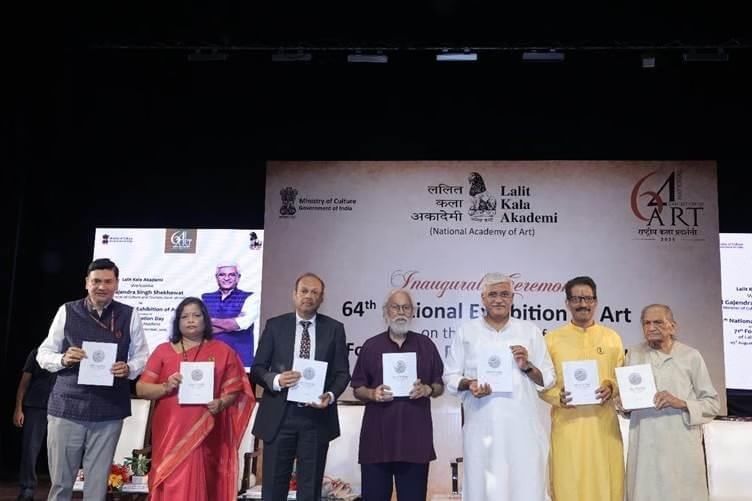 Why in News?
Why in News?
The 64th National Exhibition of Art (NEA), organized by the Lalit Kala Akademi, was recently inaugurated in New Delhi, marking a significant event in the Indian art scene.
Key Takeaways
- The exhibition showcases visual art advancements in India.
- Lalit Kala Akademi was established to promote understanding of Indian art.
- The Akademi has regional centers across various cities in India.
Additional Details
- Lalit Kala Akademi: Established on 5th August 1954 by the Government of India, it serves as an autonomous body aimed at promoting and propagating Indian art both domestically and internationally.
- Statutory Authority: Gained status under the Societies Registration Act 1860 in 1957, further solidifying its role in the art community.
- Funding: The Akademi is funded by the Ministry of Culture, which supports its various initiatives.
- Mission: It aims to identify, showcase, and preserve a permanent collection of contemporary, modern, folk, and tribal art from India.
- The NEA is recognized as the most prestigious annual event of the Akademi, beginning in 1955.
This year's exhibition emphasizes artist empowerment and showcases the rich tapestry of Indian visual art, reflecting the Akademi's longstanding commitment to cultural exchange and development.
GS1/History & Culture
Vitthal Rukhmini Temple
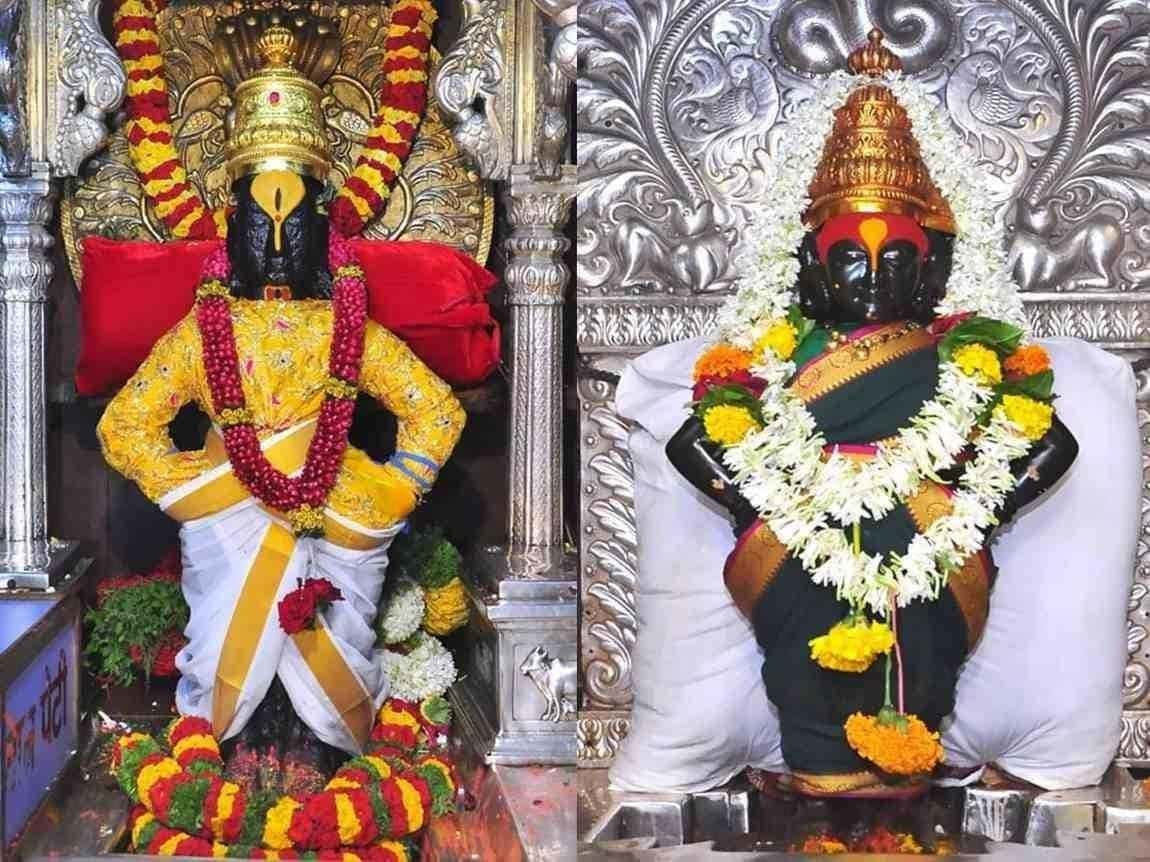 Why in News?
Why in News?
A recent language row has emerged at the renowned Vitthal-Rukhmini temple in Pandharpur, highlighting ongoing cultural and linguistic tensions in the region.
Key Takeaways
- The temple is located in Pandharpur, Maharashtra, along the banks of the Bhima River, also known as Chandrabhaga.
- It is dedicated to Lord Vithoba, a form of Lord Vishnu or Krishna, and his consort Rukhmini.
- Classified as one of the 108 Abhimana Kshethrams of the Vaishnavate tradition.
Additional Details
- Historical Significance: The temple was built by King Vishnuvardhana of the Hoysala Empire between 1108 and 1152 CE, inspired by the great devotee Pundalik.
- An inscription from Hoysala King Vira Someshwara, dating back to 1237 CE, granted the temple a village for its maintenance.
- The extensive temple structure was constructed in the second half of the 13th century following the Hemadpanti architectural style.
- The temple was attacked and severely damaged multiple times, with the current structure built in the 17th century in the Deccan style featuring dome motifs and lobed arches, supported by contributions from the Peshwas of Pune, the Shindes of Gwalior, and the Holkars of Indore.
- Notably, the temple became the first shrine in India to welcome individuals from backward categories as priests in 2014.
The Vitthal Rukhmini Temple is not only a significant religious site but also a focal point of cultural and social developments in Maharashtra, reflecting the evolving dynamics of faith and community.
GS1/History & Culture
Red Fort as the Venue for Independence Day
Why in News?
On August 15, 2025, the Prime Minister delivered the longest Independence Day speech, lasting 103 minutes, from the historic Red Fort. This event continues a tradition initiated by Jawaharlal Nehru in 1947. The choice of the Red Fort as the venue highlights its importance as Delhi's seat of power and a symbol of India’s sovereignty.
Key Takeaways
- The Red Fort has been the site of India's Independence Day celebrations since 1947.
- It serves as a significant symbol of India's history and sovereignty.
Additional Details
- Construction: Built in 1648 by Mughal Emperor Shah Jahan, the fort served as the palace fortress of Shahjahanabad, his newly established capital.
- Material: The fort is characterized by massive red sandstone walls, which enclose royal pavilions and apartments.
- Water Feature: It originally contained the Nahr-i-Behisht, or "Stream of Paradise," a continuous water channel enhancing its beauty.
- Architectural Value: The Red Fort is a prime example of Mughal architecture, merging Islamic styles with Indian craftsmanship.
- Recognition: In 2007, it was declared a UNESCO World Heritage Site.
Historically, Delhi has been the seat of power for nearly a thousand years, regarded as the "capital of all Hindustan" by Babur. The Red Fort was inaugurated in 1648 and remained central to governance even after the decline of the Mughal Empire. The British took control during the 1857 Revolt, which marked the end of Mughal rule, and the Red Fort was repurposed into a military garrison, significantly damaging its interiors.
Significantly, the Red Fort hosted the INA trials in 1946, stirring nationalist sentiments. On August 15, 1947, Jawaharlal Nehru hoisted the national flag here, marking the first Independence Day address. This tradition has continued, with every Prime Minister addressing the nation from its ramparts, symbolizing India's reclamation of sovereignty from colonial rule.
In summary, the Red Fort stands not only as a historical monument but as a powerful symbol of India's independence and democratic values.
GS1/History & Culture
Piprahwa Relics of Buddha
 Why in News?
Why in News?
The Union Culture Ministry has successfully retrieved the sacred ‘Piprahwa’ Buddhist relics, which were set to be auctioned in Hong Kong.
Key Takeaways
- The relics were discovered in 1898 by William Claxton Peppe, a British engineer.
- Piprahwa is identified as the ancient Kapilavastu, the capital of the Shakya republic.
- The site yielded significant findings including bone fragments believed to be Buddha’s relics.
Additional Details
- Discovery: The relics were unearthed near the Nepal border in Siddharthnagar, Uttar Pradesh.
- Historical Significance: This site is linked to Prince Siddhartha (Buddha) who lived here before his renunciation.
- Findings: A buried stupa contained a large stone coffer with bone fragments, caskets made of soapstone and crystal, and over 1,800 ornaments such as pearls, rubies, sapphires, and gold sheets.
- Legal Custody: The British Crown claimed the relics under the Indian Treasure Trove Act of 1878, with most artifacts transferred to the Indian Museum in Kolkata.
Stupas with Buddha’s Relics
- After the Buddha’s death (Mahaparinirvana), his cremated relics were divided among 8 kingdoms and a Brahmin named Drona.
- Each recipient built a stupa to enshrine their share of the relics, which became important pilgrimage sites and centers of Buddhist worship.
- Nine stupas were located in Rajagriha, Vaishali, Kapilavastu, Allakappa, Ramagrama, Vethadipa, Pava, Kushinagar, and Pippalivana.
- Emperor Ashoka (3rd century BCE) redistributed the relics from these stupas into thousands of new stupas across his empire.
- The stupa at Ramagrama is unique as it is believed to remain untouched and still holds the original relics.
- A typical early Buddhist stupa included a hemispherical mound (anda), a square railing (harmika), a central pillar (yashti) with umbrellas (chatra), and a path for circumambulation (pradakshinapatha).
In summary, the Piprahwa relics are of great historical and cultural significance, representing an essential part of Buddhist heritage and the journey of Buddha’s relics across ancient India.
With reference to ancient India, consider the following statements:
- 1. The concept of Stupa is Buddhist in origin.
- 2. Stupa was generally a repository of relics.
- 3. Stupa was a votive and commemorative structure in Buddhist tradition.
How many of the statements given above are correct?
- Options: (a) Only one (b) Only two* (c) All three (d) None
GS1/History & Culture
Mahabodhi Temple
Why in News?
The Supreme Court has agreed to review a petition aimed at repealing the Bodh Gaya Temple Act of 1949. The petition advocates for the establishment of a central law to improve the management of the Mahabodhi Temple located in Bihar.
Key Takeaways
- The Mahabodhi Temple is one of the four most sacred sites in Buddhism.
- The temple marks the spot where Buddha attained Enlightenment, known as Bodhi.
- The site also includes the Sacred Bodhi Tree, a direct descendant of the original tree.
Additional Details
- Location: The Mahabodhi Temple is situated in Bodh Gaya, Bihar, on the banks of the Niranjana River.
- Historical Significance: The first temple at this location was established by Mauryan emperor Ashoka in the 3rd century BC. The current temple structure was constructed during the Gupta period in the 5th to 6th centuries AD. It is one of the earliest brick temples still standing in India.
- The temple underwent significant restoration in the 19th century, conducted by Myanmar Buddhists and British archaeologist Sir Alexander Cunningham.
- In 2002, it was designated a UNESCO World Heritage site.
- Architecture: The temple stands 180 feet (55 meters) tall and features a pyramid-shaped central tower known as a shikhara, adorned with multiple layers of niches and fine engravings. Four smaller towers are positioned at each corner of the two-story structure.
- Inside the temple, a yellow sandstone statue of the Buddha is encased in glass, while the Vajrasana (Diamond Throne) marks the exact spot of Buddha's meditation and enlightenment.
- Stone railings surround both the temple and the Sacred Bodhi Tree, and one of Ashoka’s famed pillars is located at the southeast corner of the temple.
- The entire complex spans 4.8 hectares, featuring ancient shrines as well as modern structures built by devotees.
The Mahabodhi Temple remains a vital pilgrimage site for Buddhists around the world, symbolizing peace and enlightenment.
GS1/History & Culture
Who was Vithalbhai Patel?
 Why in News?
Why in News?
The Delhi Legislative Assembly recently hosted a two-day conference titled ‘Vithalbhai Patel: His Role in Shaping India's Constitution and Legislative Institutions’ in New Delhi, highlighting his significant contributions to Indian politics and the freedom movement.
Key Takeaways
- Vithalbhai Patel was born on 27 September 1873 and was a notable Indian legislator and political leader.
- He was the elder brother of Sardar Patel and a co-founder of the Swaraj Party.
- Despite differences with Mahatma Gandhi's philosophy, he joined the Indian National Congress to fight for independence.
- He gained prominence through his oratory skills and was elected to the Central Legislative Assembly in 1923.
- Vithalbhai Patel became the first Indian President of the Central Legislative Assembly in 1925.
- He passed away in Geneva, Switzerland, on October 22, 1933.
Additional Details
- Swaraj Party: Founded by Vithalbhai Patel along with Chittaranjan Das and Motilal Nehru, the party aimed to enter legislative councils and abolish British governance in India.
- His speeches not only resonated with the masses but also drew international attention to India's struggle for freedom.
- Vithalbhai’s contributions were essential in laying the groundwork for legislative institutions in India.
In summary, Vithalbhai Patel played a pivotal role in India's independence movement and the establishment of legislative frameworks, making a lasting impact on the country's political landscape.
GS1/History & Culture
NCERT Textbooks Introduce Indian Art Forms
Why in News?
For the first time, the National Council of Educational Research and Training (NCERT) has included Indian classical music, dance, theatre, and visual arts in the primary and middle school textbooks for Classes 3 to 8. This initiative aligns with the National Education Policy (NEP) 2020, which emphasizes integrating education with India's cultural heritage.
Key Takeaways
- Inclusion of classical arts in school curriculum.
- Focus on exposure, appreciation, and creativity in arts education.
- Content covers various classical music and dance forms.
Additional Details
- Music Content: Includes concepts such as swar, laya, shabd, and features Sanskrit shloka recitations, folk songs, and ragas from Hindustani and Carnatic music.
- Dance Content: Covers eight classical dance forms: Bharatnatyam, Kathak, Kathakali, Kuchipudi, Manipuri, Mohiniyattam, Odissi, and Sattriya. Draws inspiration from ancient texts like Natyashastra, Brihaddeshi, Sangita Damodara, and Abhinaya Darpanam.
- Pedagogy: Emphasizes storytelling, expressions (abhinaya), theatre, and group performances rather than skills mastery.
Classical Dance Forms Mentioned
- Bharatnatyam (Tamil Nadu): The oldest dance form with temple origins, characterized by fixed torso, bent legs, intricate footwork, and devotional themes.
- Kathak (North India): A storytelling tradition known for fast spins (chakkars) and rhythmic footwork, evolved in temples and Mughal courts.
- Kathakali (Kerala): A dance-drama form featuring elaborate costumes and gestures, based on epics like the Ramayana.
- Kuchipudi (Andhra Pradesh): Combines dance and drama, includes dialogue, and features the famous Tarangam item.
- Manipuri (Manipur): A graceful form linked to the Ras Lila of Krishna, known for lyrical movements.
- Mohiniyattam (Kerala): Known as the "Dance of the Enchantress," characterized by soft and gentle movements.
- Odissi (Odisha): A temple dance associated with Jagannath worship, recognized for its sculptural qualities.
- Sattriya (Assam): Introduced by Srimanta Sankardev, recognized as a classical form in 2000, combines dance, drama, and music.
For examination preparation, consider the following question:
How do you distinguish between Kuchipudi and Bharatanatyam dances?
- 1. Dancers occasionally speaking dialogues is found in Kuchipudi dance but not in Bharatanatyam.
- 2. Dancing on the brass plate by keeping the feet on its edges is a feature of Bharatanatyam but Kuchipudi does not have such movements.
The correct answer is: (a) 1 only
GS1/History & Culture
Origins of the Modern Ganesh Chaturthi Festival
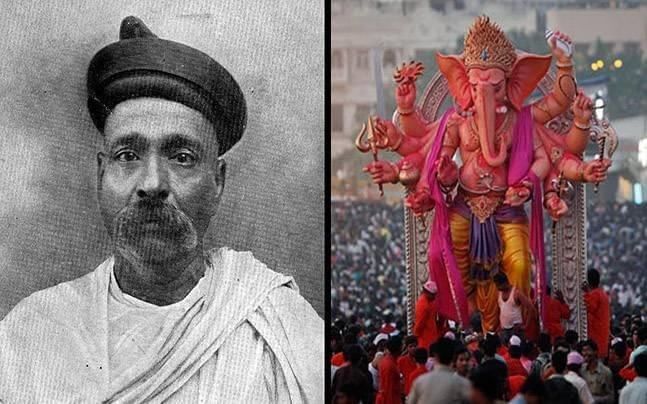 Why in News?
Why in News?
This newscard provides insights into the historical significance and evolution of the Ganesh Chaturthi festival, emphasizing its role in fostering community and cultural identity in India.
Key Takeaways
- The public celebration of Ganesh Chaturthi began in response to communal tensions in the 1890s.
- Lokmanya Tilak played a crucial role in transforming the festival into a socio-political event.
- Ganesh Chaturthi became a platform for collective identity and mass participation among diverse communities.
Additional Details
- Historical Context: In May 1894, Governor George Robert Canning Harris issued a circular regulating religious processions in Poona, highlighting communal biases.
- In July 1894, disturbances during a palkhi procession led to calls from newspapers for reduced participation in Moharram, indicating growing communal tensions.
- By September 1894, large Ganesh idols were publicly paraded for the first time, marking a shift from private worship to community-wide celebrations.
- Role of Lokmanya Tilak: Through his publications, Kesari (Marathi) and English editions, Tilak promoted Ganesh Chaturthi as a unifying social and cultural festival, advocating for collective identity.
- By 1895, Tilak argued that a nation requires common laws and a shared cultural identity, emphasizing the festival’s potential to bridge political movements and ordinary citizens.
- The festival's transformation into a community celebration helped mobilize socio-political movements while preserving its religious significance.
The evolution of Ganesh Chaturthi illustrates its importance beyond religious observance, serving as an essential tool for social cohesion and political mobilization in Indian society.
GS1/History & Culture
UGC Draft Curriculum Highlights Ancient Wisdom in Higher Education
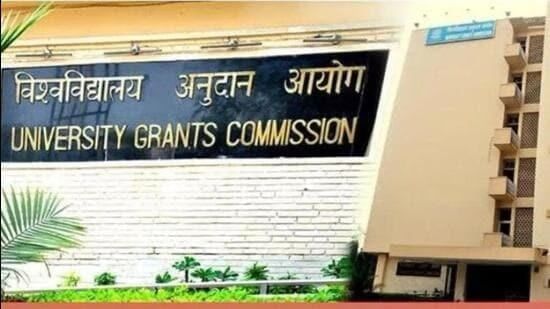 Why in the News?
Why in the News?
The University Grants Commission (UGC) has released a draft curriculum framework that integrates Indian Knowledge Systems (IKS) into undergraduate courses. This initiative has stirred discussions regarding the balance between traditional wisdom and academic rigor.
Key Takeaways
- The draft curriculum emphasizes the inclusion of Indian Knowledge Systems across various undergraduate disciplines.
- It aims to align higher education with India's cultural and intellectual heritage, as promoted by the National Education Policy (NEP) 2020.
- Stakeholder feedback is being sought on the proposed framework.
Additional Details
- Subject-wise Integration: Each academic discipline is encouraged to incorporate elements of Indian thought, blending traditional wisdom with modern educational outcomes.
- Mathematics: Proposed modules will include mandala geometry, yantras, and the study of temple architecture using āyādi ratios.
- Commerce: The curriculum will integrate Bhartiya philosophy and the Gurukul system, focusing on ethical leadership and sustainable practices.
- Economics: A focus on dharmic perspectives regarding wealth and trade ethics will contextualize economic studies within India's cultural traditions.
- Chemistry: Traditional fermented beverages will be studied alongside ancient concepts of the atom, merging historical insights with modern chemical education.
- Anthropology: Influential thinkers like Charaka and Sushruta will inform the curriculum, enriching the understanding of the relationship between nature and culture.
The draft curriculum represents a significant shift in India's educational philosophy. By embedding Indian Knowledge Systems into mainstream education, the UGC aims to decolonize curricula, promote indigenous heritage, and encourage ethical practices in various fields. If adopted, this framework could redefine higher education, ensuring that it is both culturally rooted and globally relevant. However, it remains essential to balance these ancient teachings with the principles of scientific inquiry and critical thinking.
GS1/History & Culture
Gopal Patha and Direct Action Day
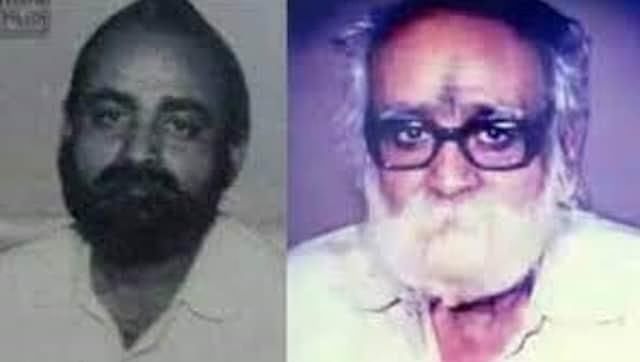 Why in News?
Why in News?
A recent movie has highlighted the 1946 "Great Calcutta Killing," which involved four days of communal riots on Direct Action Day (August 16, 1946). This event has brought attention to Gopal Patha's significant role in mobilizing Hindu youth during this tumultuous period.
Key Takeaways
- Direct Action Day was called by the All-India Muslim League to advocate for the Partition and the establishment of Pakistan.
- On August 16, 1946, a public holiday was declared by Bengal Premier H. S. Suhrawardy, leading to a mass rally of nearly 100,000 people in Calcutta.
- Violence erupted immediately, resulting in significant casualties between 5,000 and 10,000, with around 15,000 injured.
- The violence lasted for four days and spread to other regions, requiring military intervention.
Additional Details
- About Direct Action Day: Initiated by the All-India Muslim League, it aimed to press for the Partition of India and the creation of Pakistan.
- Role of Gopal Patha: Born in 1916 in Bowbazar, Calcutta, Gopal Mukherjee, known as Gopal Patha, led a street group of approximately 800 men, mobilizing them for defense during the riots. He emphasized retaliation against rioters while forbidding harm to women, children, or ordinary citizens.
- Influences: Gopal Patha was associated with revolutionary groups such as the Atma Unnati Samiti and was influenced by Subhas Chandra Bose.
The events of Direct Action Day serve as a stark reminder of the communal tensions that existed in pre-partition India and highlight the pivotal role individuals like Gopal Patha played during this period.
GS1/History & Culture
Mahatma Ayyankali: A Pioneer of Social Justice
Why in News?
On August 28, marking his Jayanti, Prime Minister paid tribute to Mahatma Ayyankali, reflecting on his significant contributions to social justice and education in Kerala.
Key Takeaways
- Mahatma Ayyankali was born on August 28, 1863, in Venganoor, Travancore (now Thiruvananthapuram, Kerala).
- He belonged to the Pulayar caste, which was among the most oppressed groups facing severe caste discrimination.
- Ayyankali is remembered as a Dalit leader who championed social justice, education, and labor rights.
Additional Details
- Caste Defiance: He led the famous Villuvandi Yatra in 1893, an ox-cart ride on caste-restricted roads, which ignited riots but also mobilized mass support for Dalit rights.
- Education Movement: Ayyankali advocated for Dalit children's access to public schools, leading to a 1907 order from the Travancore government that was implemented by 1910.
- Sadhu Jana Paripalana Sangham (SJPS): Founded in 1907, this organization aimed at promoting Dalit education, legal aid, and social upliftment, expanding to hundreds of branches over time.
- Legislative Role: In 1910, he became the first Dalit member of the Sree Moolam Popular Assembly (Travancore Legislative Council).
- Labour Reforms: Ayyankali fought for better wages and dignity for agricultural laborers.
- Social Reforms: He campaigned for Dalit women's right to cover their upper bodies in public, a right that had been denied to them.
- Temple Entry Movement: His early campaigns from 1895 contributed to the 1936 Temple Entry Proclamation, which ended the exclusion of Dalits from temples in Travancore.
- Ayyankali was admired by Mahatma Gandhi, who referred to him as the "Pulaya King," and was later recognized by Indira Gandhi as "India's greatest son."
Mahatma Ayyankali's legacy continues to inspire movements for social justice and equality in India, making his contributions essential to the history of Kerala and the broader fight against caste discrimination.
Question: Who among the following was the founder of the ‘Self-Respect Movement’?
- (a) ‘Periyar’ E. V. Ramaswamy Naicker *
- (b) Dr. B. R. Ambedkar
- (c) Bhaskarrao Jadhav
- (d) Dinkarrao Javalkar
|
164 videos|798 docs|1153 tests
|
FAQs on History, Art & Culture: August 2025 Current Affairs - General Test Preparation for CUET UG - CUET Commerce
| 1. What is the significance of the Lalit Kala Akademi in the promotion of Indian art? |  |
| 2. What are the key features of the Mahabodhi Temple and its historical importance? |  |
| 3. What archaeological discoveries have been made at Topra Kalan related to the Mauryan era? |  |
| 4. How did the Piprahwa relics contribute to our understanding of Buddhism? |  |
| 5. Who was Vithalbhai Patel and what was his contribution to India's independence movement? |  |
















